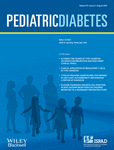Evaluation of a combined blood glucose monitoring and gaming system (Didget®) for motivation in children, adolescents, and young adults with type 1 diabetes†
These data were previously presented in part at the 35th Annual Scientific Meeting of the International Society for Pediatric and Adolescent Diabetes (ISPAD), September 2–5, 2009, Ljubljana, Slovenia.
Abstract
The purpose of this study was to assess the performance and acceptability of a blood glucose meter coupled with a gaming system for children, adolescents, and young adults with type 1 diabetes. During an in-clinic visit, duplicate blood samples were tested by subjects (N = 147; aged 5–24 yr) and health care providers (HCPs) to evaluate the accuracy and precision of the Didget® system. Subjects' meter results were compared against Yellow Springs Instruments (YSI) reference results and HCP results using least squares regression and error grid analyses. Precision was measured by average within-subject and within-HCP coefficient of variation (CV). During the home-use component of this study, subjects (n = 58) tested their blood glucose at least two to three times daily for 3–5 d to evaluate routine use of the system. Subjects' meter results showed significant correlations with both YSI (r2 = 0.94; p < 0.001 for regression slope) and HCP results (r2 = 0.96; p < 0.001). Average within-subject and within-HCP CVs were 5.9 and 7.2%, respectively. Overall satisfaction was assessed by subjects, their parents or guardians, and HCP surveys. Subject satisfaction with the Didget® system was good to excellent; most subjects found the system easy to use, motivating, and helpful for building good blood glucose monitoring habits. Most HCPs agreed that the system fulfilled a need in diabetes management. In conclusion, the Didget® system was precise and clinically accurate in the hands of children, adolescents, and young adults with type 1 diabetes.




